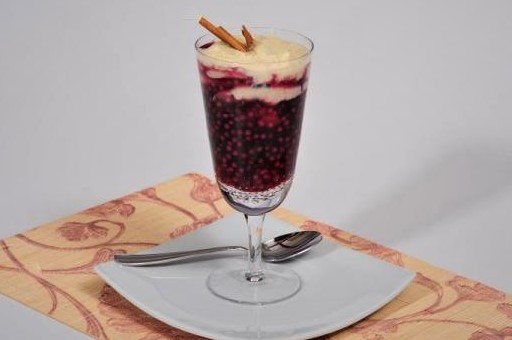Sago recipe
The sago is a food produced from the starch of some species of palm trees and also from cassava, the latter being the most popular in Brazil. Similar in appearance to caviar, it is usually served in desserts, juices, teas and even soups. Learn how to prepare sago accompanied by vanilla cream with the help of Specialfood!
Ingredients for making Sago:
For the sago:
250 grams of sago
1 liter of water
1 liter of fine red table wine
1 cup of sugar (160 grams)
For vanilla cream
1 liter of milk
1 tablespoon of sugar
2 tablespoons of vanilla sugar
2 tablespoons of cornstarch
How to make Sago:
Start by preparing the sago by placing the wine and water in a large pot. Bring to a boil.
At this point add the sago balls, cook over low heat and, when they are getting color, add the sugar. Let it cook for another 15 to 20 minutes, stirring occasionally, then turn it off and let it cool.
Now prepare the vanilla cream that will accompany the sago! To do this, separate half of the milk and dissolve the cornstarch very well in it, to avoid lumps. Also add the two sugars and stir.
Bring the other half of milk over medium heat to a boil. When this happens, lower the heat and, little by little, add the previous milk, stirring constantly. Continue stirring continuously for 5 minutes or until thickened, then turn off and let cool.
Now prepare the dessert: in individual glasses place a generous portion of sago and top with vanilla cream. Refrigerate for 1 to 2 hours and serve immediately. Enjoy your food!
If you liked the Sago recipe, we suggest you enter our Spoon Candy Recipes category. You can also visit a list of the best Brazilian recipes. You may be interested to read pasta with ham recipe/ polenta with champignons recipe/ porridge with fruit topping recipe/ pumpkin spiced milk recipe/ roots in salt crust recipe/ spaghetti with vegan ragout recipe.




Comments
Post a Comment